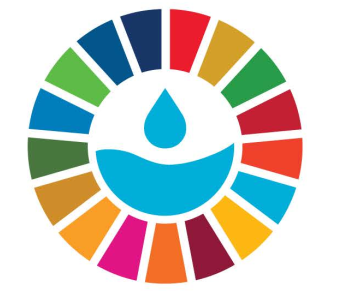Meaningful Water Policy and Governance Reform in Canada
Forum for Leadership on Water
(
Non-governmental organization (NGO)
)
#SDGAction50714
Description
1. Build a Canada Water Agency, based on the five foundational pillars, that leads collaborative efforts involving all levels of government, engages Canadians, and leverages Canada’s wealth of knowledge in water science and technology. The new Canada Water Agency will:
- Meaningfully advance the federal government’s commitment to reconciliation with Indigenous Peoples;
create and mobilize the knowledge – both Western and Indigenous science and knowledge – needed to predict and respond to water problems and opportunities;
strengthen shared water decision-making and management;
-Emphasize the importance of watershed boundaries in all water decision-making; and
- Play a key role addressing outdated water laws and policies.
2. Renew the Canada Water Act, in collaboration with provincial, territorial, and Indigenous governments. The Canada Water Act is our primary federal freshwater legislation, yet it has not been meaningfully updated since it was passed in 1970. To ensure that the renewed Act is consent-based and rooted in nation-to-nation relationships, we propose a co-drafting process with Indigenous Nations.
3. A historic investment of $1 billion over 5 years in the Freshwater Action Plan
A historic investment of $1 billion over 5 years in the health of our waters. Across Canada, community organizations, Indigenous communities and local governments are ready to implement an abundance of freshwater projects that will create much-needed local jobs while strengthening our water security, climate resilience, and the overall quality of life for all people in Canada. The Freshwater Action Plan will provide the needed resources to ensure these essential projects are implemented in communities across the country.
This initiative will foster the creation of collaborative governance mechanisms and policies through the creation of a Federal Canada Water Agency and the renewal of the Canada Water Act. Such reforms will aim to protect and manage freshwater at the watershed levels across Canada and the US (SDG 6), particularly in the face of a climate-impacted future (SDG 13). They will be built upon collaboration and innovation (6.5) and incorporate meaningful change to protect watersheds into national strategy and law (13). Moreover, such policies will inspire broader benefits for the health of the entire watershed, including terrestrial ecosystems (SDG 15). Most importantly, the collaborative governance model will make meaningful steps toward reconciliation in Canada and encourage inclusive cooperation at the municipal, provincial, federal and global levels.
• Forum for Leadership on Water,
• International Joint Commission
• Aqua Action
• Nature Fund of New Brunswick
• Data Stream
• Gordon Foundation
• POLIS Project on Ecological Governance, University of Victoria
• Centre for Indigenous Research
• BC Freshwater Legacy Initiative,
• Watersheds BC,
• Atlantic Water Network,
• Council of the Great Lakes Region
• Canada Water Decade
• Canadian Coalition for Healthy Waters (representing over 75+ non-profits in Canada)
• Swim Drink Fish
• Healthy Watersheds Initiative
SDGS & Targets
Goal 6
Ensure availability and sustainable management of water and sanitation for all
6.1
By 2030, achieve universal and equitable access to safe and affordable drinking water for all
6.1.1
Proportion of population using safely managed drinking water services
6.2
By 2030, achieve access to adequate and equitable sanitation and hygiene for all and end open defecation, paying special attention to the needs of women and girls and those in vulnerable situations
6.2.1
Proportion of population using (a) safely managed sanitation services and (b) a hand-washing facility with soap and water
6.3
By 2030, improve water quality by reducing pollution, eliminating dumping and minimizing release of hazardous chemicals and materials, halving the proportion of untreated wastewater and substantially increasing recycling and safe reuse globally
6.3.1
Proportion of domestic and industrial wastewater flows safely treated
6.3.2
Proportion of bodies of water with good ambient water quality
6.4
6.4.1
Change in water-use efficiency over time
6.4.2
Level of water stress: freshwater withdrawal as a proportion of available freshwater resources
6.5
By 2030, implement integrated water resources management at all levels, including through transboundary cooperation as appropriate
6.5.1
Degree of integrated water resources management
6.5.2
Proportion of transboundary basin area with an operational arrangement for water cooperation
6.6
6.6.1
Change in the extent of water-related ecosystems over time
6.a
6.a.1
Amount of water- and sanitation-related official development assistance that is part of a government-coordinated spending plan
6.b
Support and strengthen the participation of local communities in improving water and sanitation management
6.b.1
Proportion of local administrative units with established and operational policies and procedures for participation of local communities in water and sanitation management
Goal 13
Take urgent action to combat climate change and its impacts
13.1
Strengthen resilience and adaptive capacity to climate-related hazards and natural disasters in all countries
13.1.1
Number of deaths, missing persons and directly affected persons attributed to disasters per 100,000 population
13.1.2
Number of countries that adopt and implement national disaster risk reduction strategies in line with the Sendai Framework for Disaster Risk Reduction 2015–2030
13.1.3
Proportion of local governments that adopt and implement local disaster risk reduction strategies in line with national disaster risk reduction strategies
13.2
Integrate climate change measures into national policies, strategies and planning
13.2.1
Number of countries with nationally determined contributions, long-term strategies, national adaptation plans and adaptation communications, as reported to the secretariat of the United Nations Framework Convention on Climate Change
13.2.2
Total greenhouse gas emissions per year
13.3
Improve education, awareness-raising and human and institutional capacity on climate change mitigation, adaptation, impact reduction and early warning
13.3.1
Extent to which (i) global citizenship education and (ii) education for sustainable development are mainstreamed in (a) national education policies; (b) curricula; (c) teacher education; and (d) student assessment
13.a
Implement the commitment undertaken by developed-country parties to the United Nations Framework Convention on Climate Change to a goal of mobilizing jointly $100 billion annually by 2020 from all sources to address the needs of developing countries in the context of meaningful mitigation actions and transparency on implementation and fully operationalize the Green Climate Fund through its capitalization as soon as possible
13.a.1
Amounts provided and mobilized in United States dollars per year in relation to the continued existing collective mobilization goal of the $100 billion commitment through to 2025
13.b
Promote mechanisms for raising capacity for effective climate change-related planning and management in least developed countries and small island developing States, including focusing on women, youth and local and marginalized communities
13.b.1
Number of least developed countries and small island developing States with nationally determined contributions, long-term strategies, national adaptation plans and adaptation communications, as reported to the secretariat of the United Nations Framework Convention on Climate Change
Goal 16
Promote peaceful and inclusive societies for sustainable development, provide access to justice for all and build effective, accountable and inclusive institutions at all levels
16.1
Significantly reduce all forms of violence and related death rates everywhere
16.1.1
16.1.2
16.1.3
Proportion of population subjected to (a) physical violence, (b) psychological violence and/or (c) sexual violence in the previous 12 months
16.1.4
Proportion of population that feel safe walking alone around the area they live after dark
16.2
End abuse, exploitation, trafficking and all forms of violence against and torture of children
16.2.1
Proportion of children aged 1–17 years who experienced any physical punishment and/or psychological aggression by caregivers in the past month
16.2.2
16.2.3
Proportion of young women and men aged 18–29 years who experienced sexual violence by age 18
16.3
Promote the rule of law at the national and international levels and ensure equal access to justice for all
16.3.1
Proportion of victims of (a) physical, (b) psychological and/or (c) sexual violence in the previous 12 months who reported their victimization to competent authorities or other officially recognized conflict resolution mechanisms
16.3.2
16.3.3
Proportion of the population who have experienced a dispute in the past two years and who accessed a formal or informal dispute resolution mechanism, by type of mechanism
16.4
By 2030, significantly reduce illicit financial and arms flows, strengthen the recovery and return of stolen assets and combat all forms of organized crime
16.4.1
16.4.2
16.5
Substantially reduce corruption and bribery in all their forms
16.5.1
16.5.2
16.6
Develop effective, accountable and transparent institutions at all levels
16.6.1
16.6.2
Proportion of population satisfied with their last experience of public services
16.7
Ensure responsive, inclusive, participatory and representative decision-making at all levels
16.7.1
Proportions of positions in national and local institutions, including (a) the legislatures; (b) the public service; and (c) the judiciary, compared to national distributions, by sex, age, persons with disabilities and population groups
16.7.2
16.8
Broaden and strengthen the participation of developing countries in the institutions of global governance
16.8.1
Proportion of members and voting rights of developing countries in international organizations
16.9
By 2030, provide legal identity for all, including birth registration
16.9.1
16.10
Ensure public access to information and protect fundamental freedoms, in accordance with national legislation and international agreements
16.10.1
16.10.2
16.a
Strengthen relevant national institutions, including through international cooperation, for building capacity at all levels, in particular in developing countries, to prevent violence and combat terrorism and crime
16.a.1
16.b
Promote and enforce non-discriminatory laws and policies for sustainable development
16.b.1
SDG 14 targets covered
| Name | Description |
|---|
Deliverables & Timeline
Resources mobilized
Partnership Progress
Feedback
Action Network

Timeline
Entity
Region
- North America
Other beneficiaries
All people who live in Canada.
More information
Countries
Contact Information
Emily, Director

